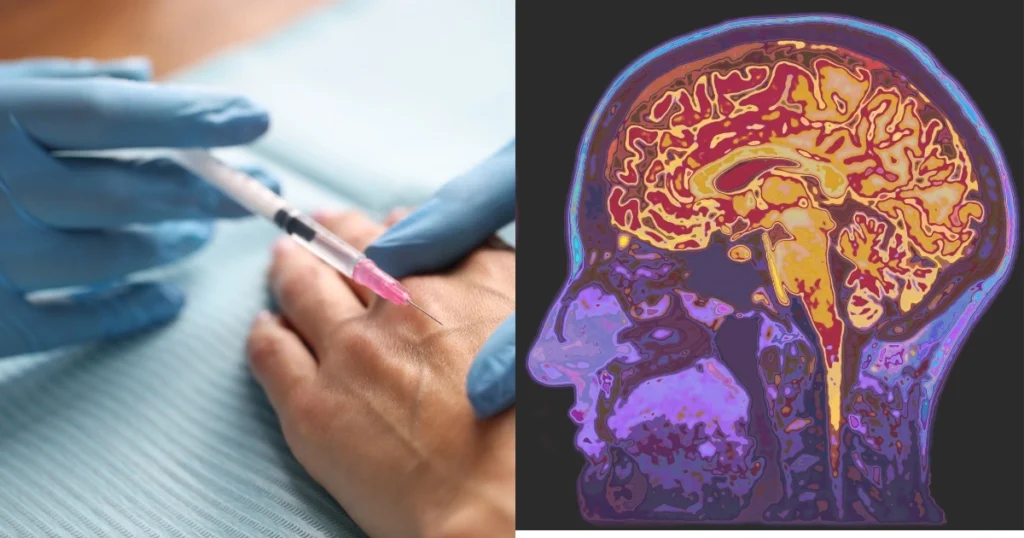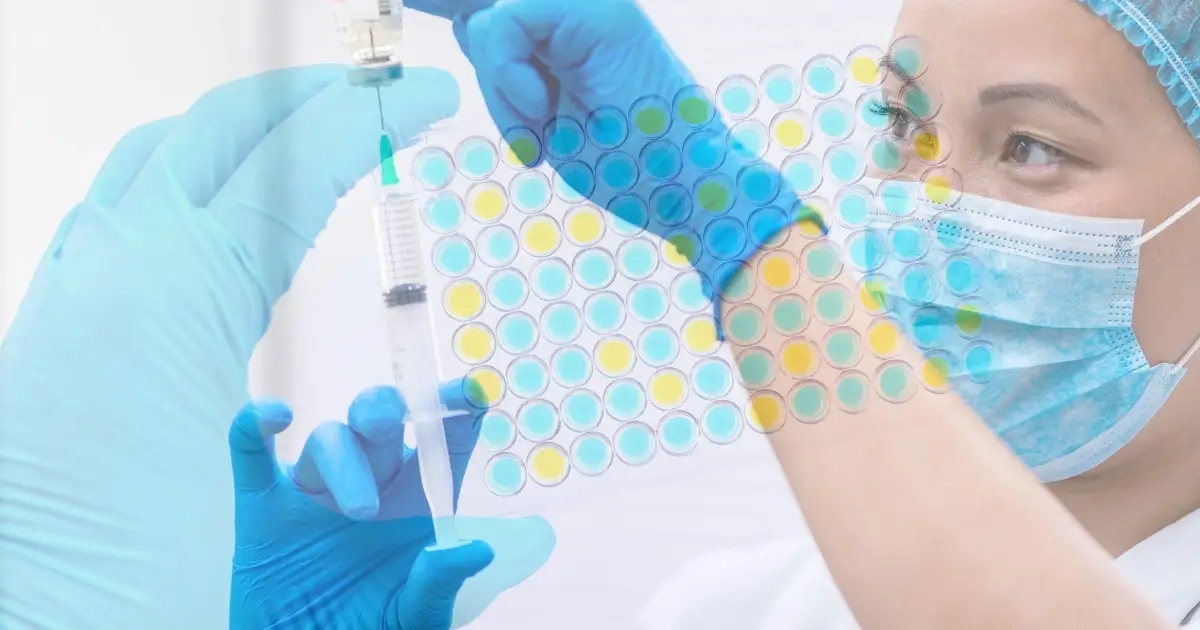Table of Contents
The rise of antibiotic resistance has been a significant concern in modern medicine, challenging healthcare systems worldwide. As bacteria evolve and render traditional antibiotics less effective, researchers have been exploring new avenues for combating infections. One of the most promising fields in this endeavor is nanotechnology, which has the potential to revolutionize the development and delivery of antibiotics. This article delves into the relationship between nanotechnology and antibiotics, exploring how cutting-edge science is shaping the future of healthcare.
Key Takeaways
- Antibiotic resistance is a critical global health crisis, threatening modern medicine.
- Nanotechnology enables precise, targeted drug delivery to infection sites.
- Nanoparticles improve antibiotic effectiveness by bypassing bacterial defenses.
- Metal nanoparticles show promise with direct antimicrobial properties.
- Challenges include safety, scalability, and regulatory approval for nanomedicines.
The Growing Threat of Antibiotic Resistance
A Global Health Crisis
Antibiotic resistance has reached crisis levels globally, with the World Health Organization (WHO) identifying it as one of the top threats to public health. Each year, millions of people worldwide are affected by infections that no longer respond to conventional antibiotics. Common illnesses like pneumonia, tuberculosis, and urinary tract infections are becoming more challenging to treat due to the spread of antibiotic-resistant bacteria.
Superbugs such as methicillin-resistant Staphylococcus aureus (MRSA) and carbapenem-resistant Enterobacteriaceae (CRE) are of particular concern. These bacteria have developed mechanisms to evade nearly all antibiotics, leading to prolonged illness, increased healthcare costs, and higher mortality rates. With the antibiotic development pipeline drying up, there is an urgent need for innovative solutions, and nanotechnology offers a promising path forward.
The limitations of Current Antibiotics
Despite being hailed as one of the greatest medical discoveries of the 20th century, antibiotics face significant limitations today. Over time, bacteria have adapted to survive even the most potent drugs, developing resistance through genetic mutations. In addition, antibiotics tend to have broad-spectrum effects, killing both harmful and beneficial bacteria, which can disrupt the body’s natural microbiome.
Traditional antibiotics also struggle to penetrate certain areas of the body, such as biofilms (protective layers created by bacteria) or intracellular environments. These limitations underscore the need for advanced therapeutic approaches like nanotechnology, which can enhance the precision and efficacy of antibiotic treatments.
How Nanotechnology is Revolutionizing Antibiotics?
What is Nanotechnology?
Nanotechnology refers to the manipulation of matter on an atomic, molecular, and supramolecular scale. Typically, nanotechnology operates at a size range of 1 to 100 nanometers (nm)—about 100,000 times smaller than the width of a human hair. By working at such a small scale, nanotechnology allows scientists to create materials and devices with enhanced properties, such as improved strength, chemical reactivity, and electrical conductivity.
In the context of antibiotics, nanotechnology can be used to design nanoparticles that deliver drugs more effectively to infected areas, bypassing bacterial defenses and reducing side effects. Nanotechnology is also opening doors to the creation of entirely new antimicrobial agents with mechanisms of action that bacteria have not yet encountered, offering hope in the fight against resistant infections.
Nanoparticles as Antibiotic Carriers
One of the most promising applications of nanotechnology in antibiotics is the use of nanoparticles to deliver drugs. Nanoparticles can be engineered to carry antibiotics directly to the site of infection, improving drug concentration in the affected area while minimizing exposure to other parts of the body. This targeted delivery reduces the risk of damaging healthy cells and helps preserve the natural microbiome.
Lipid-based nanoparticles (such as liposomes) and polymeric nanoparticles are particularly useful as drug carriers. These nanoparticles can encapsulate antibiotics, protecting them from degradation in the body and allowing them to reach bacterial cells more efficiently. Moreover, nanoparticles can be designed to release their payload in response to specific environmental triggers, such as the acidic conditions found in infected tissues, enhancing the precision of antibiotic therapy.
A notable example of this technology is the development of nano-sized liposomes loaded with antibiotics. These liposomes are capable of penetrating biofilms—a protective layer that bacteria produce to shield themselves from antibiotics. By delivering drugs directly to bacteria hiding in biofilms, nanoparticle-based therapies can overcome one of the most significant barriers to treating chronic and resistant infections.
New Antimicrobial Agents Using Nanotechnology
Metal Nanoparticles with Antimicrobial Properties
In addition to acting as carriers, certain nanoparticles themselves have intrinsic antimicrobial properties. Metal nanoparticles, such as those made from silver, gold, zinc oxide, and copper, have been shown to effectively kill bacteria by disrupting bacterial membranes, generating reactive oxygen species (ROS), and interfering with bacterial DNA.
Silver nanoparticles (AgNPs), in particular, have garnered attention for their potent antimicrobial activity. Silver has long been used as a disinfectant, but the advent of nanotechnology has enhanced its effectiveness. Silver nanoparticles can attach to bacterial cell walls and release silver ions, which disrupt vital bacterial processes. Furthermore, silver nanoparticles have been shown to penetrate biofilms and act synergistically with traditional antibiotics, enhancing their overall effectiveness.
Studies have also shown that gold nanoparticles can be functionalized with antibiotics or peptides to target specific bacterial strains. These gold nanoparticles are not only highly effective at killing bacteria but can also reduce the likelihood of resistance development, as they work via multiple mechanisms that bacteria cannot easily adapt to.

Nano-Antibiotics: Engineered to Fight Resistance
Researchers are also developing nano-antibiotics, which are antibiotics engineered at the nanoscale to improve their pharmacological properties. These nano-sized drugs have enhanced penetration capabilities, allowing them to reach bacteria hiding in difficult-to-access areas, such as intracellular spaces or within biofilms.
Nano-antibiotics are particularly effective against gram-negative bacteria, which have an extra outer membrane that makes them difficult to treat with conventional antibiotics. By designing antibiotics at the nanoscale, scientists can improve the ability of these drugs to cross bacterial membranes and deliver a potent therapeutic payload.
One exciting development in this area is the use of quantum dots—nanoparticles that emit light when exposed to UV radiation. These quantum dots can be functionalized to bind to bacterial cells, where they generate reactive oxygen species (ROS) upon activation by light. This oxidative stress damages bacterial cells, offering a novel mechanism for killing bacteria that may be less prone to resistance.
Benefits and Challenges of Nanotechnology in Antibiotics
Advantages of Nanotechnology
Nanotechnology offers several significant advantages in the development and delivery of antibiotics:
- Targeted delivery: Nanoparticles can be designed to deliver antibiotics specifically to the site of infection, reducing the risk of side effects and preserving beneficial bacteria.
- Enhanced bioavailability: Nanotechnology can improve the solubility and stability of antibiotics, ensuring that they remain active in the body for longer periods.
- Overcoming bacterial defenses: Nanoparticles can penetrate biofilms and intracellular spaces, addressing one of the biggest challenges in treating resistant infections.
- Synergistic effects: Metal nanoparticles can work synergistically with traditional antibiotics, enhancing their potency and reducing the likelihood of resistance development.

Challenges and Limitations
While nanotechnology holds immense promise, there are still several challenges that need to be addressed before it can be widely implemented in clinical settings:
- Safety and toxicity: The long-term effects of nanoparticles on human health are not yet fully understood. Some metal nanoparticles, such as silver and copper, can accumulate in tissues, potentially leading to toxicity. Ensuring the safety of nanoparticle-based therapies is crucial before they can be used on a large scale.
- Cost and scalability: Producing nanoparticles and nano-antibiotics can be expensive, and scaling up production to meet global demand poses a significant challenge. Further research and investment are needed to make these technologies more cost-effective.
- Regulatory approval: Nanotechnology-based drugs face stringent regulatory hurdles, as their unique properties require new frameworks for testing and approval. Ensuring that these therapies meet safety and efficacy standards will be critical for their successful adoption.
The Future of Nanotechnology in Antibiotic Development
Personalized Medicine and Nano-Antibiotics
As nanotechnology advances, its applications in personalized medicine will likely grow. Nanoparticles can be tailored to target specific bacterial strains, allowing for more individualized treatment approaches. In the future, doctors could use diagnostic tools to identify the precise bacteria causing an infection and design a custom nanoparticle-based therapy to treat it, reducing the risk of resistance and improving patient outcomes.
Combining Nanotechnology with Traditional Antibiotics
Nanotechnology can also be used to enhance the effectiveness of existing antibiotics. By combining nanoparticles with traditional antibiotics, scientists can create hybrid therapies that leverage the strengths of both approaches. For example, antibiotic-loaded nanoparticles could be used in combination with metal nanoparticles to attack bacteria from multiple angles, reducing the chances of resistance development.
Furthermore, smart nanoparticles are being developed that can release their drug payload in response to specific environmental conditions, such as the presence of bacteria or changes in pH. These responsive delivery systems could provide more precise and effective treatments for bacterial infections, with fewer side effects and lower doses required.
Conclusion: Nanotechnology as a Game-Changer in healthcare
Nanotechnology is poised to revolutionize the way we approach antibiotic development and delivery. By enhancing the precision, effectiveness, and safety of antibiotics, nanotechnology offers a powerful tool in the fight against antibiotic-resistant bacteria. From targeted drug delivery to the creation of novel antimicrobial agents, nanotechnology holds immense promise for the future of healthcare.
However, as with any new technology, there are challenges to overcome, including safety concerns, production costs, and regulatory barriers. With continued research and innovation, nanotechnology could play a key role in addressing the growing threat of antibiotic resistance, helping to ensure that future generations have access to effective treatments for bacterial infections.
References
- Tacconelli, E., Carrara, E., Savoldi, A., et al. (2018). Discovery, research, and development of new antibiotics: The WHO priority list of antibiotic-resistant bacteria and tuberculosis. The Lancet Infectious Diseases, 18(3), 318-327. https://pubmed.ncbi.nlm.nih.gov/29276051/.
- Hutchings, M. I., Truman, A. W., & Wilkinson, B. (2019). Antibiotics: Past, present and future. Current Opinion in Microbiology, 51, 72-80. https://doi.org/10.1016/j.mib.2019.10.008.
- Liu, B., & Pop, M. (2020). Antibiotic resistance genes and human microbiomes. International Journal of Environmental Research and Public Health, 47(2), 111-120. https://doi.org/10.3390/ijerph17020447
- Wright, G. D. (2019). Unlocking the potential of natural products in antibiotic discovery. Nature Reviews Drug Discovery, 18(5), 267-285. https://doi.org/10.1111/1751-7915.13351.
- Ventola, C. L. (2015). The antibiotic resistance crisis: Causes and threats. Pharmacy and Therapeutics, 40(4), 277-283. PMID: 25859123.
FAQ
- 1. What is antibiotic resistance?
Antibiotic resistance occurs when bacteria adapt and no longer respond to the drugs designed to kill them, making infections harder to treat and increasing the risk of disease spread, severe illness, and death. - 2. How can nanotechnology help combat antibiotic resistance?
Nanotechnology can enhance drug delivery, allowing antibiotics to target infections more precisely, penetrate bacterial biofilms, and overcome traditional bacterial defenses, making treatment more effective. - 3. What are nanoparticles, and why are they useful in antibiotics?
Nanoparticles are tiny particles that can deliver drugs directly to the infection site. They improve drug stability, reduce side effects, and enhance antibiotic penetration in hard-to-reach areas, such as biofilms. - 4. Are there safety concerns with using nanotechnology in medicine?
Yes, while promising, some nanoparticles may accumulate in the body, causing potential toxicity. Rigorous testing and regulatory standards are essential to ensure safe use in medical treatments. - 5. Will nanotechnology replace traditional antibiotics?
No, nanotechnology is not meant to replace antibiotics but to enhance their effectiveness. It can be used to create hybrid treatments and improve delivery, helping preserve antibiotics’ efficacy for longer.

1 thought on “Nanotechnology in Antibiotics: Revolutionizing Modern Medicine”